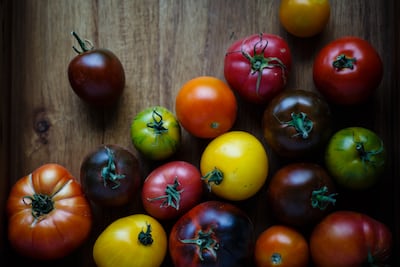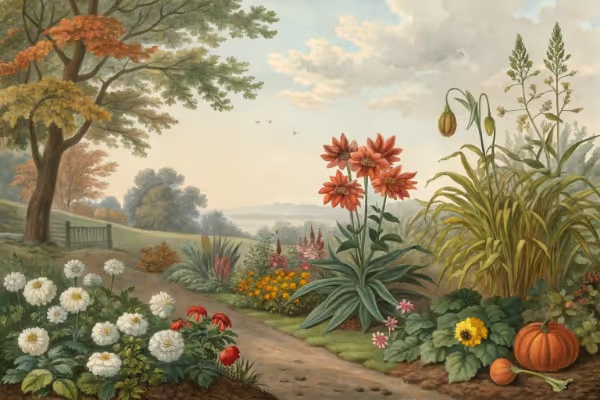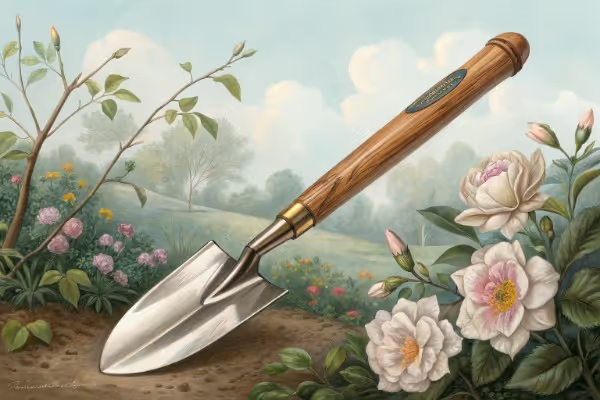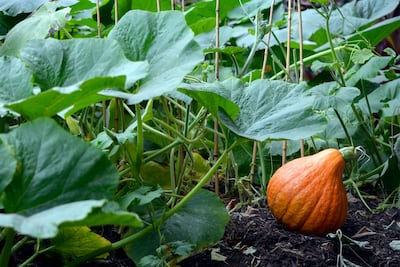What to Plant in January for a Healthy Winter Garden
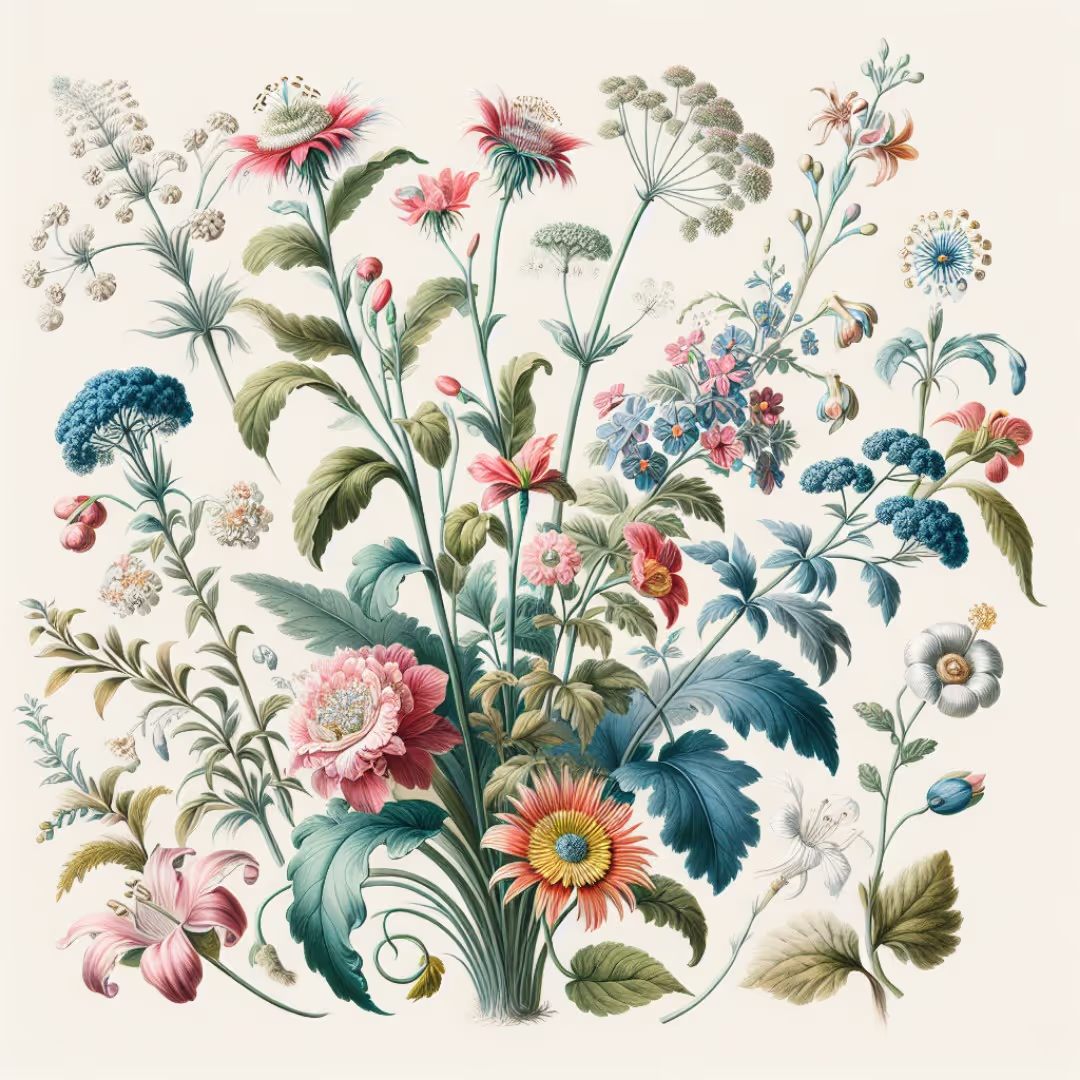
What to plant in January
Wondering what to plant in January? Kick off your gardening year by sowing hardy vegetables like kale, spinach, and broad beans, or start fragrant sweet pea seeds for early beauty. Even in chilly weather, planting now pays off with a longer growing season, healthier crops, and blooms that show up right on time—read on for my shortlist of January plantings that'll reward your efforts.
Cheatsheet: January Planting for Maximum Winter Harvest
🌱 Direct Sow Outdoors
- Zones 7-10: Spinach, arugula, peas, fava beans, radishes, broad beans, onions
- Soil temp: 40°F+ (4°C+); use row covers for protection
- Nutrition: Dark greens pack iron, calcium, vitamin C
🏡 Start Indoors
- Cool-season: Kale, cabbage, broccoli, cauliflower, lettuce, leeks, celery
- Root crops: Beets, turnips, carrots
- Transplant after 6-8 weeks or at 3-4 true leaves
🧅 Bulbs, Tubers & Sets
- Garlic: Plant in mild climates (zones 8-10)
- Shallots & Onions: Sets or seeds
- Potatoes: Start early in frost-free ground
⚡ Quick Growers
- Microgreens: Ready in 7-14 days; nutrient dense
- Herbs: Parsley, cilantro, chives, dill indoors
🦠 Disease & Pest Watch
- 80% of fungal pathogens thrive in damp cold – ventilate and rotate
- Check for slugs and aphids weekly
🛠️ Tools and Products You'll Need
- High-quality seeds & sets
- Seed trays, cell packs, or small pots
- Row covers or frost blankets
- Potting soil & organic compost
- Grow lights (for indoor starts)
- Hand trowel, labels, gloves
🔄 Step-by-Step Method
- Check soil temp: Must reach 40°F (4°C) for most seeds
- Amend soil: Add compost & remove debris
- Sow seeds: Sow 2x depth of seed size; space as directed
- Cover beds: Use row covers for warmth & pest protection
- Start indoors: Fill trays, plant seeds, set under lights
- Water: Keep soil moist but not soggy
- Monitor: Ventilate, check for pests, thin seedlings as needed
🍲 Nutrition & Self-Sufficiency
- Leafy greens: 3x more vitamin K than summer lettuce
- Homegrown: Cuts grocery trips, maximizes winter nutrients
What to plant in January depends on your zone, soil temperature, and how much protection you can throw over a bed.
Here is what I sow or set now for a healthy winter garden, then harvest steadily into spring.
- Direct sow with or without cover: spinach, mache corn salad, claytonia, winter lettuce, arugula, radishes, Asian greens, peas, broad beans fava, carrots in mild zones, beets in mild zones.
- Plant sets and crowns: garlic in mild zones, onion sets or seedlings, shallots, asparagus crowns, rhubarb crowns, bare root strawberries.
- Bare root fruit: apples, pears, plums, peaches in mild zones, cane fruit raspberries, blackberries, currants, gooseberries, figs in mild zones.
- Indoors: onions, leeks, celery, parsley, early brassicas, slow flowers like lisianthus, plus microgreens every week.
I keep a soil thermometer clipped to the shed door and trust it more than the forecast.
Seeds care about soil temperature, not wishful thinking.
"About 50 percent of the United States shifted to a warmer half zone in the 2023 USDA Plant Hardiness Zone Map," USDA Agricultural Research Service.
Great, but frost still bites. I plant to my microclimate and stack protection like row cover over low hoops when the night dips below 26 F minus 3 C.
- Spinach and Asian greens tatsoi, mizuna, pak choi for cut and come again salads.
- Peas shelling and snap once soil hits 40 F 4 C. I like short vines like 'Sugar Ann' under netting.
- Carrots under low tunnels for straight roots and clean washouts. Try 'Napoli' or 'Yaya'.
- Beets 'Boltardy' holds in warming weather, 'Kestrel' for sweet tops and roots.
- Cilantro and dill thrive in cool light and resist bolting now.
- Broad beans fava 'Aquadulce Claudia'. Tough to about 15 F minus 9 C with cover.
- Mache corn salad 'Vit' laughs at frost and tastes like hazelnuts after a freeze.
- Claytonia miner's lettuce for succulent leaves under row cover.
- Winter lettuce 'Winter Density', 'Rouge d'Hiver', 'Merveille des Quatre Saisons'.
- Radishes 'French Breakfast' or 'Sparkler' in a quick 25 to 35 days, faster under a cold frame.
- Spinach 'Giant Winter' or 'Bloomsdale' under double row cover. Leaves sweeten after hard frosts.
- Arugula direct sown in a low tunnel, harvest baby leaves in 25 days.
- Land cress Barbarea for a peppery winter stand-in for arugula.
- Scallions 'Ishikura' overwinter well inside a cold frame for spring pullings.
"Spinach will germinate at soil temperatures down to about 35 F 2 C, with best emergence between 50 and 75 F 10 to 24 C," University extension guidance.
I seed spinach thickly and thin with scissors for salads, then let the survivors bulk up for bunches.
The thinning goes into the pan with eggs and garlic, five minutes, no fuss.
- Onions by daylength: short day 'Texas 1015' for the South, intermediate 'Candy' for mid latitudes, long day 'Walla Walla' for the North.
- Shallots and multiplier onions for an early allium cushion in May.
- Garlic in zones 8 to 10 if the ground did not clod up. I use hardneck 'Music' for scapes and fat cloves.
- Asparagus crowns in well drained beds. Two shovel depths of compost, then plant 6 to 8 in 15 to 20 cm deep.
- Rhubarb crowns set the crown just at soil level and mulch. Cover with a big pot to force in late winter if you like neon pink stalks.
- Bare root strawberries day neutral 'Albion' for continuous fruit, spaced 12 in 30 cm.
I soak dry crowns in water for 30 minutes before planting. It wakes them up without shocking them.
January is prime time for bare root trees while they are dormant, which matches advice from the Royal Horticultural Society and many extensions.
I heel in arrivals immediately if soil is frozen and pot them in tubs in an unheated garage at 35 to 45 F 2 to 7 C.
- Apples, pears, plums on disease tolerant rootstocks. Look for scab and fire blight resistance codes.
- Peaches and apricots only in warm, sheltered spots. Choose low chill varieties in zones 9 to 10.
- Raspberries, blackberries, currants, gooseberries plant canes now and cut back to a few strong buds.
- Figs in mild zones, or plant in large containers to drag into a garage for tough cold snaps.
I water bare roots in with a dilute seaweed solution. It settles soil without a nitrogen blast.
- Parsley transplants under cloche, flavors stew like a squeeze of lemon.
- Thyme and chives can be divided and replanted if the ground gives. Sharp spade, quick move, water in.
- Cilantro direct sown, slow and steady under fleece.
If beds are empty, I plant winter rye or hairy vetch in zones 8 to 10 and let roots do the tilling.
In colder zones, I sow a quick strip of field peas under a low tunnel for nitrogen and tender tips for stir fry.
I start onions and leeks indoors in mid January on a heat mat set at 68 F 20 C, then grow cool at 55 F 13 C.
Brassicas like cabbage and broccoli get a two to three week head start in trays, with lights 6 to 12 in 15 to 30 cm above for 14 to 16 hours.
- Celery and parsley need patience and steady moisture. I mist and run a small fan to stop damping off.
- Peppers only if you are in very short season areas and want ultra early fruit. I usually hold peppers until February.
I winter sow perennials in clear jugs outside with vents. Freeze thaw cycles prime seeds without fuss.
- Echinacea needs 30 to 60 days at 34 to 40 F 1 to 4 C to break dormancy.
- Lupines benefit from a week in the fridge and a nick on the seed coat.
- Milkweed likes 30 days cold moist treatment for reliable sprout rates.
I use floating row covers at 0.55 oz per sq yd 17 gsm for light frost, and 0.9 oz per sq yd 30 gsm for real cold on tender starts.
Low hoops with clear poly add 4 to 8 F 2 to 4 C by day, and I vent at noon to dodge fungal trouble.
A simple soil test tells you if calcium or sulfur is needed, and I adjust pH before spring rush.
I add 1 to 2 in 2.5 to 5 cm of compost over beds, then mulch paths with wood chips to trap heat and suppress splatter.
- Soil thermometer, stainless probe, fast read.
- Row cover 17 and 30 gsm with pins, plus 9 gauge wire hoops.
- 72 cell trays, peat free seed mix, bottom heat mat with thermostat.
- Full spectrum LED shop lights on a timer at 14 to 16 hours.
- Grafting knife or sharp pruners for bare root work, and tree ties that stretch.
- Spinach 'Giant Winter' for leaves that stand at 20 F minus 6 C under cover.
- Mache 'Vit' for salads that taste like spring in February.
- Claytonia for succulent texture and fast regrowth.
- Lettuce 'Winter Density' for crisp hearts in low light.
- Tatsoi rosette for spoon leaves that sear like scallops.
- Arugula 'Astro' for quick baby cuts.
- Broad bean 'Aquadulce Claudia' for early pods.
- Pea 'Meteor' dwarf, stout, early.
- Onion 'Candy' reliable bulbing from a January start.
- Shallot 'French Red' easy multiplier.
- Garlic 'Music' big cloves and spring scapes.
- Strawberry 'Albion' day neutral for steady fruit.
I sow brassica mixes, sunflower, pea shoots, and cilantro weekly in 10 by 20 trays 25 by 51 cm.
Ten days later, the trays taste like a new season and keep the knife out of the overwintered beds.
- Planting into cold mud. If soil balls in your fist, wait or switch to containers under cover.
- Overfeeding winter crops. High nitrogen in low light gives floppy, sappy growth that freezes.
- Skipping ventilation. I prop cold frames open at lunch on any day over 40 F 4 C.
- Buying the wrong daylength onions. Match latitude to short, intermediate, or long day types.
RHS monthly guides reinforce the bare root window and winter veg under cloches, and their timing lines up with what I see in cold frames.
University extensions from Wisconsin, Cornell, and UC recommend soil temp based sowing for peas at 40 F 4 C and spinach at 35 F 2 C, which mirrors my germination logs.
"Plant bare root trees and hedges while they are dormant in mid winter, provided soil is workable," Royal Horticultural Society guidance.
- Zones 9 to 10: direct sow greens, carrots, beets, peas, cilantro, dill. Plant garlic, onions, bare root fruit.
- Zones 7 to 8: sow spinach, mache, claytonia, radish under cover. Plant onions, shallots, cane fruit, and fruit trees if soil is workable.
- Zones 5 to 6: sow spinach and arugula under double cover. Start onions and leeks indoors. Order bare roots and heel in on arrival.
- Zones 3 to 4: focus on indoor starts and winter sowing. Maintain covers on fall plantings and stage bare roots in protected pots.
If my soil thermometer reads over 40 F 4 C at 9 a.m., peas go in. If it reads under 35 F 2 C, I sow spinach and mache, then lay fabric and sleep well.
Plant to the thermometer, protect smart, and January turns into a quiet harvest machine.

Want smarter plant choices? 🪴
Frequently Asked Questions About January Planting
Can vegetables be sown outdoors in cold January weather?
Some hardy vegetables thrive when sown directly outdoors during January. Plant early varieties like peas, carrots, spinach, kale, and broad beans (fava beans) in well-drained soil. Cover seedlings with horticultural fleece or cold frames to guard against frost, especially if temperatures fall below 25°F (-4°C).
What flowering plants brighten January gardens?
Flowering plants such as snowdrops, winter aconites, hellebores, pansies, violas, and primroses offer welcome color in January. Plant these winter bloomers in sheltered spots with adequate sunlight and protection from harsh winds to ensure vibrant displays.
Should herbs be started indoors this month?
Start herbs like parsley, chives, cilantro, oregano, thyme, and basil indoors on a sunny windowsill or heated propagator during January. Maintain indoor temperatures around 65-70°F (18-21°C) and transplant seedlings to larger pots or outdoors once warmer weather returns.
Which fruit trees suit January planting?
Dormant bare-root fruit trees—such as apple, pear, plum, cherry, and peach—benefit from January planting. Choose sheltered, sunny areas and plant soon after purchase, ensuring roots remain moist and soil is not frozen or waterlogged.
Are there special considerations for indoor plant seeds started in January?
Indoor seedlings planted during January require sufficient natural or artificial light, consistent watering without over-saturation, and steady indoor temperatures. Using clear seed trays with lids or clear bags can enhance humidity and germination rates. Ventilate containers regularly to prevent mold and fungal growth.
Does soil preparation differ for winter planting?
Before January planting, work organic matter like compost or aged manure into the soil to support good drainage and fertility. Avoid working soil when heavily saturated or frozen. Raised beds or containers offer viable alternatives if garden soil remains too wet or frozen.
What to plant in January isn’t about chasing perfection—it’s about working with what winter gives you. Kale, spinach, onions, and broad beans all shrug off the cold, setting you up for a steady harvest when others are just waking up their gardens. Don’t forget to amend your soil and tuck in your seeds with mulch for warmth. If you’re growing indoors, check out tips for indoor crops to keep salads and herbs close at hand. January rewards the bold and the prepared; a little effort now means your winter garden will pay you back in spades. Stay curious, try new varieties, and let the cold be your teacher.
Pro Tips for January Planting: Organic Practices for Optimal Winter Produce
Prioritize Soil Temperature Checks
Monitor soil temperature frequently; optimal germination for winter crops usually occurs above 40°F (4°C). Use a soil thermometer to track accurately.
Implement Frost Protection Strategies
- Employ row covers and cloches to shield crops against sudden frost spells below 28°F (-2°C).
- Apply an insulating straw mulch layer approx. 2-3 inches (5-7.5 cm) thick over roots of established plants.
Select Cold-Hardy, Nutrient-Dense Varieties
- Mizuna: Rich in antioxidants, matures within 40 days, ideal for vitamin C intake during winter months.
- Mâche (Corn Salad): High iron content, thrives at temperatures as low as 5°F (-15°C).
- Claytonia (Miner's Lettuce): Excellent vitamin A source, germinates easily at 35°F (1.6°C).
Natural Pest Control for Winter Crops
Encourage beneficial insects by installing insect hotels near planting sites; ladybugs substantially reduce aphid populations—eliminating chemical-based control measures.
Optimize Microclimates for Improved Growth
- Position winter crops against a south-facing wall to utilize reflected sunlight and warmth.
- Construct raised beds for superior drainage and soil warmth, raising soil temperature by approx. 5°F (3°C) compared to flat ground.
Promote Self-Sufficient Seed Saving
Allow healthiest winter crops like kale and spinach to bolt in early spring, capturing seeds for future planting; ensures crop resilience and self-sustainability.
Find out which plants will thrive in your garden!
Answer a few fun questions and get custom plant recommendations perfect for your space. Let’s grow something amazing together!

start your season

